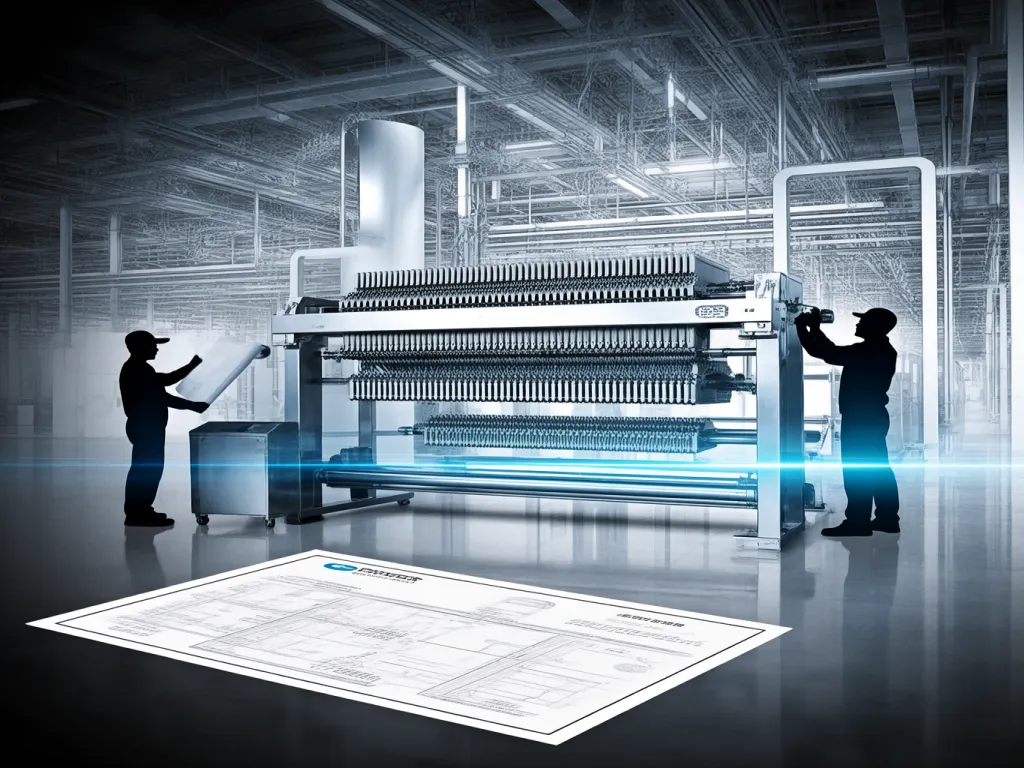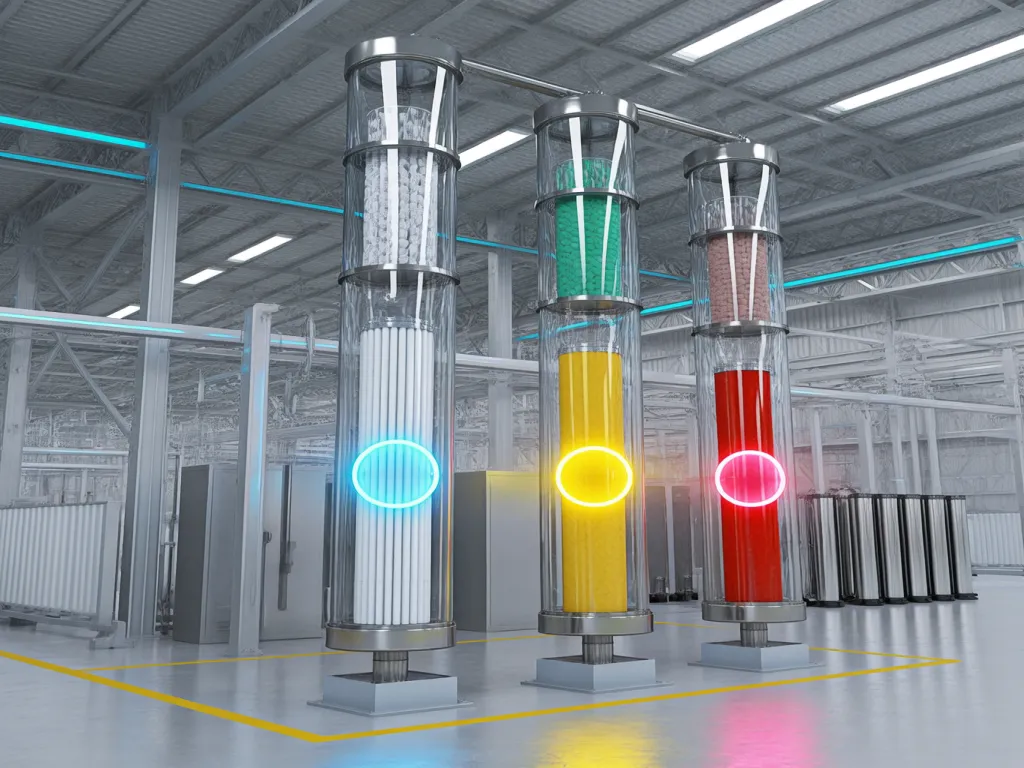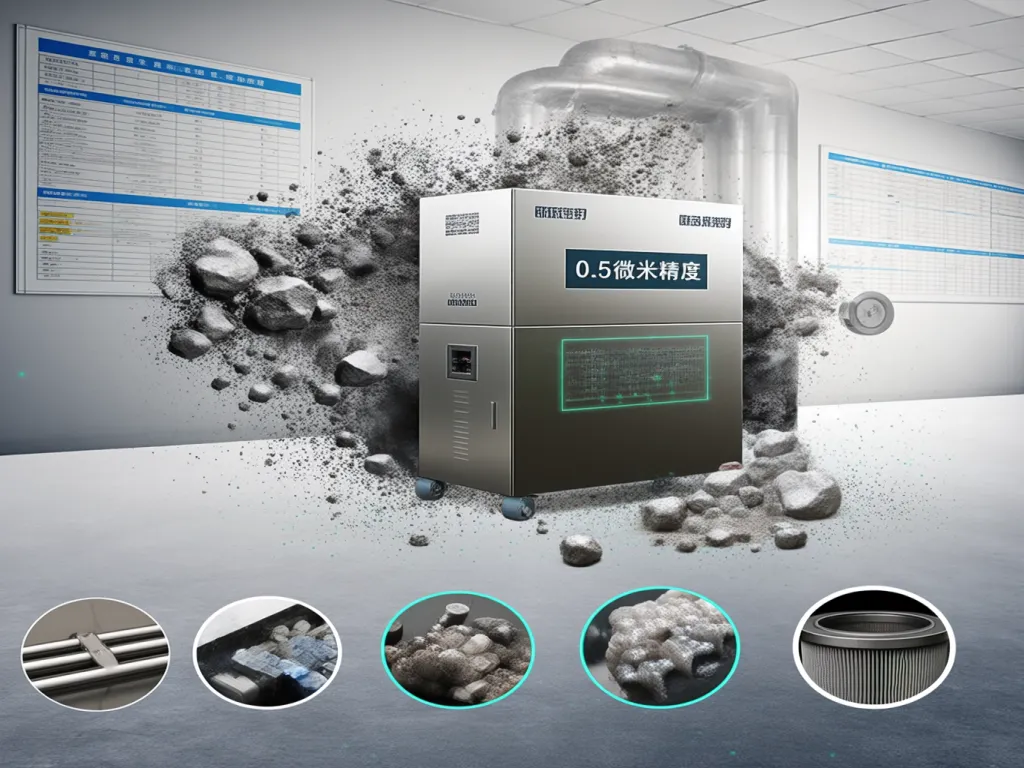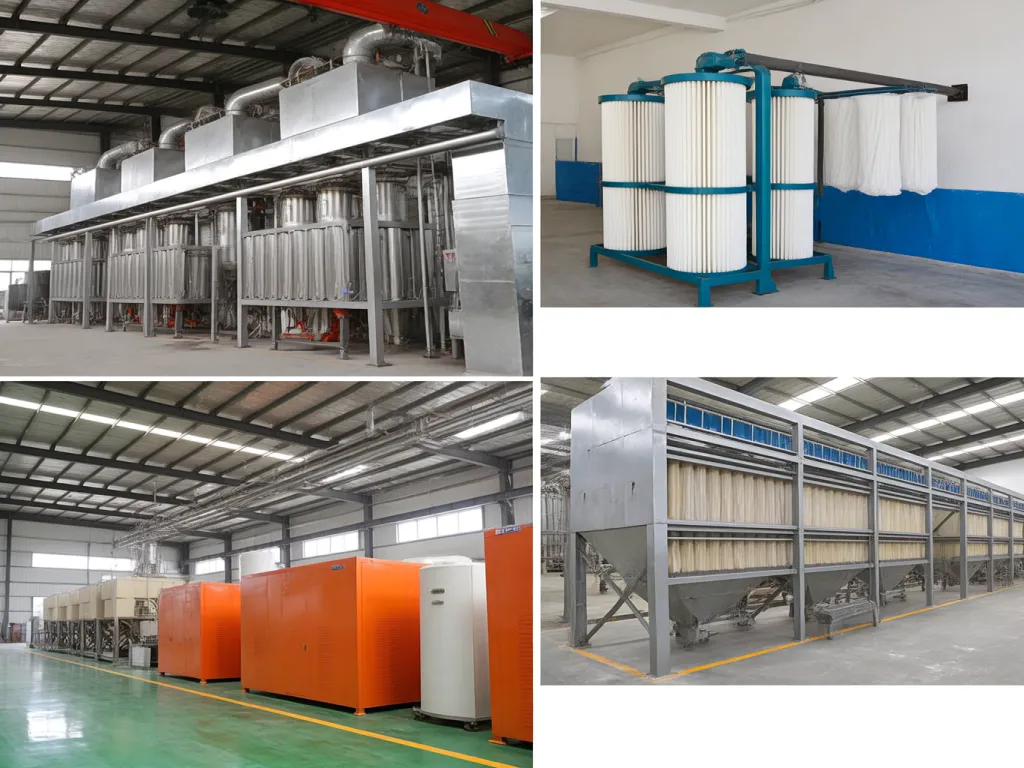Filter Bag House Mastery: Tech Specs & Precision

When it comes to industrial filtration, the stakes are high. A subpar filter bag house manufacturer can mean the difference between seamless operations and costly downtime. So, how do you ensure you’re partnering with a provider that truly understands the nuances of high-efficiency filtration? Dive in as we unravel the technical parameters and precision standards that define a top-tier filter bag house manufacturer, and why these elements are crucial for your industrial setup.

Technical Parameters Unveiled: From Filter Media to Airflow, Analyzing Key Factors Affecting Filtration Efficiency
When it comes to selecting a reliable filter bag house manufacturer, understanding the technical parameters that dictate filtration efficiency is crucial. These parameters aren’t just numbers on a spec sheet; they’re the backbone of how effectively your system will perform in real-world conditions. So, let’s dive deep into the nitty-gritty of filter media, filtration area, and airflow handling capacity – the trio that defines your filter bag house’s prowess.
First up, filter media. This isn’t just about picking a fabric; it’s about choosing the right material that can withstand the harsh environments of industrial filtration. Polyester, polypropylene, and aramid are some of the common materials used. But why does it matter? Well, each material has its unique properties. Polyester, for instance, offers excellent chemical resistance and durability, making it a go-to for many applications. Polypropylene, on the other hand, is known for its moisture resistance and low cost, ideal for environments where water is a concern. Aramid, with its high-temperature tolerance, is perfect for those extreme heat conditions. The choice here directly impacts the filtration efficiency, as the wrong media can lead to premature failure or reduced performance. For specialized applications, manufacturers often offer customizable single-layer filter bags tailored to specific environmental demands.
Next, let’s talk about filtration area. It’s not just about how big the bag is; it’s about how much surface area is available for filtration. A larger filtration area means more particles can be captured, leading to higher efficiency. But it’s not a one-size-fits-all scenario. The design of the bag house, including the number of bags and their arrangement, plays a pivotal role. Imagine trying to clean a large room with a tiny broom versus a big one – the difference is clear. Similarly, a well-designed bag house with adequate filtration area ensures that air flows smoothly, particles are captured efficiently, and pressure drops are minimized. Some manufacturers also provide multi-pocket envelope filter bags to enhance filtration area without increasing the physical footprint.
Now, onto airflow handling capacity, or as we like to call it, the ‘breathability’ of your filter bag house. This parameter measures how much air the system can process per unit time, usually expressed in cubic feet per minute (CFM). Why does this matter? Well, if your bag house can’t handle the volume of air your process generates, you’ll end up with reduced efficiency, increased pressure drops, and potentially, system failure. On the flip side, an oversized system means wasted energy and higher operational costs. Finding the sweet spot is key. It involves understanding your specific process requirements, the nature of the particulates, and the desired level of filtration.
The Impact of Filter Media on Filtration Efficiency
Choosing the right filter media is like selecting the right tool for the job. It’s not just about durability; it’s about compatibility with the environment and the particles you’re trying to filter. For instance, in a cement plant, where the air is laden with abrasive particles, a media with high abrasion resistance is essential. Similarly, in a pharmaceutical setting, where cleanliness is paramount, a media that can be easily cleaned and doesn’t shed fibers is crucial. The wrong choice here can lead to frequent replacements, increased downtime, and ultimately, higher costs.
Maximizing Filtration Area for Optimal Performance
Increasing the filtration area isn’t just about adding more bags; it’s about optimizing the design to ensure maximum particle capture. This involves considering factors like bag spacing, bag length, and the overall layout of the bag house. A well-designed system ensures that air flows evenly through the bags, preventing channeling where air bypasses the filter media. It also means that the pressure drop across the bags remains consistent, ensuring that the system operates efficiently over its lifespan.
Balancing Airflow Handling Capacity for Efficiency
Finding the right airflow handling capacity is a delicate balance. It requires a thorough understanding of your process’s air volume, the nature of the particulates, and the desired filtration efficiency. A system that’s too small will struggle to keep up, leading to reduced efficiency and increased maintenance. Conversely, a system that’s too large will consume more energy than necessary, driving up operational costs. The key is to work with a manufacturer who can conduct a detailed analysis of your needs and recommend a system that’s perfectly sized for your application.

Precision Filtration Standards: Matching Industrial Needs to Emission Requirements
When it comes to selecting the right filter bag house for your industrial operation, understanding filtration precision standards is more than a technicality—it’s a necessity. The precision of your filtration system directly impacts not only the quality of your emissions but also compliance with environmental regulations and the overall efficiency of your processes. So, how do you determine the right filtration precision for your specific industrial scenario? Let’s break it down.
First, consider the nature of the particulates you’re dealing with. Are they large, abrasive particles like those found in cement manufacturing, or are they fine, potentially hazardous dusts common in pharmaceutical production? The size and type of particulates dictate the minimum filtration precision required. For instance, industries handling coarse dust may opt for a filtration precision around 10-20 microns, whereas those dealing with sub-micron particles, such as in semiconductor manufacturing, might need precision down to 0.5 microns or even finer.
Next, factor in your emission standards. Regulatory bodies worldwide have set stringent limits on particulate emissions, with some industries facing stricter scrutiny than others. For example, the power generation sector, particularly coal-fired plants, must adhere to very low emission limits to minimize environmental impact. This necessitates high-precision filtration systems capable of capturing even the smallest particles. On the other hand, less regulated industries might operate with slightly lower precision standards, though still within safe and legal limits.
But how do you translate these requirements into actionable specifications for your filter bag house? Start by consulting the emission standards specific to your industry and region. These standards often provide a clear benchmark for the maximum allowable concentration of particulates in emitted gases. From there, work backward to determine the filtration precision needed to achieve these levels. Remember, achieving compliance isn’t just about meeting the minimum; it’s about optimizing your system for efficiency and longevity.
It’s also worth noting that filtration precision isn’t a one-size-fits-all proposition. Even within the same industry, different processes may generate particulates of varying sizes and concentrations. A blast furnace in a steel mill, for example, will produce different emissions compared to a rolling mill. Thus, a tailored approach to filtration precision is essential. This means conducting regular emissions testing and adjusting your filtration system as needed to maintain optimal performance.
Moreover, don’t overlook the role of filter media in determining filtration precision. The choice of material—be it polyester, polypropylene, or specialized composites—can significantly influence the system’s ability to capture fine particles. Some materials offer superior dust cake release properties, reducing pressure drop and extending filter life, while others excel in capturing specific types of particulates. Understanding these nuances is key to selecting a filter bag house that not only meets your precision requirements but also operates efficiently over time.
So, you might be wondering, how do I balance cost with precision? It’s a valid concern. Higher precision filtration systems often come with a higher price tag, both in terms of initial investment and ongoing maintenance. However, the long-term benefits—reduced emissions, improved compliance, and enhanced process efficiency—can outweigh these costs. Plus, advancements in filter media technology are continually driving down the cost of high-precision filtration, making it more accessible than ever.
In conclusion, determining the right filtration precision for your industrial scenario requires a comprehensive understanding of your particulate characteristics, emission standards, and the capabilities of different filter media. By taking a tailored, data-driven approach, you can select a filter bag house that not only meets regulatory requirements but also optimizes your operations for efficiency and sustainability. Isn’t it time you gave your filtration system the precision it deserves?

Case Studies: High-Efficiency Filter Bag House Manufacturer in Action Across Industries
When it comes to industrial filtration, the right filter bag house manufacturer can make all the difference. Let’s dive into real-world examples where our high-efficiency filter bag house systems have transformed operations across diverse sectors. Imagine a steel plant grappling with excessive dust emissions, posing environmental and health hazards. Enter our filter bag house system, engineered with precision to handle the high-temperature, abrasive nature of steel production. By selecting a filter material with superior heat resistance and durability, coupled with a customized filtration area to match the plant’s massive airflow, we achieved a remarkable reduction in particulate matter emissions. The result? Compliance with stringent environmental regulations and a significant boost in employee morale due to cleaner air quality. Now, let’s shift gears to the pharmaceutical industry, where purity is paramount. A leading drug manufacturer approached us with a challenge: maintaining sterile conditions in their production facilities. Our solution? A filter bag house system featuring HEPA-grade filters, designed to capture even the tiniest particles. The precision in selecting the right filter media and optimizing the system’s airflow ensured that the air circulating in their cleanrooms remained virtually free of contaminants. This not only met their stringent quality standards but also enhanced their reputation for producing safe, effective medications. But what about the food processing sector, where flavor preservation is as crucial as dust control? A bakery facing issues with flour dust in their production line turned to us for a solution. We installed a filter bag house system tailored to their specific needs, focusing on gentle airflow to prevent product degradation while effectively capturing airborne flour particles. The outcome was twofold: a cleaner working environment and improved product quality, as the absence of dust contamination preserved the delicate flavors of their baked goods. These case studies highlight a crucial point: the effectiveness of a filter bag house manufacturer lies not just in the technology itself but in how it’s adapted to the unique demands of each industry. Whether it’s withstanding extreme temperatures, achieving ultra-high purity levels, or preserving product integrity, the right combination of filter materials, system design, and operational parameters can lead to transformative results. So, how do you ensure you’re getting the most out of your filter bag house investment? Start by understanding your specific filtration needs. Consider factors like the nature of the particulates, temperature and humidity conditions, and the desired level of filtration efficiency. Then, partner with a manufacturer who not only offers high-quality products but also has the expertise to customize solutions that fit your operation like a glove. In the next section, we’ll wrap up our discussion by summarizing the key takeaways and encouraging you to take the next step towards optimizing your industrial filtration system.
Steel Industry: Tackling High-Temperature Dust
The steel industry is notorious for its harsh operating conditions, including high temperatures and abrasive particulates. Our filter bag house system, designed with heat-resistant filter materials and a robust structural design, successfully managed the dust load, ensuring compliance with environmental standards and improving workplace safety.
Pharmaceuticals: Ensuring Sterile Conditions
In the pharmaceutical sector, maintaining sterile environments is critical. Our HEPA-filtered bag house systems provided the necessary filtration precision, eliminating contaminants and supporting the production of high-quality, safe medications. This case underscores the importance of selecting a manufacturer capable of delivering tailored solutions for sensitive industries.
Food Processing: Preserving Flavor and Purity
For the food processing industry, preserving product flavor and purity is essential. Our gentle-airflow filter bag house systems effectively captured airborne particles without compromising the quality of the final product. This example demonstrates how a manufacturer’s ability to adapt to industry-specific challenges can lead to significant operational improvements.
Navigating the world of filter bag house manufacturers can be daunting, but armed with the right knowledge about technical specifications and precision standards, you’re well on your way to making an informed decision. Remember, the efficiency of your industrial filtration system hinges on these critical factors. Don’t settle for less. Ready to upgrade your industrial filtration game? Explore our comprehensive guide on selecting the perfect filter bag house manufacturer tailored to your needs, and take the first step towards unparalleled filtration efficiency today. What will be your next move in optimizing your industrial processes?

